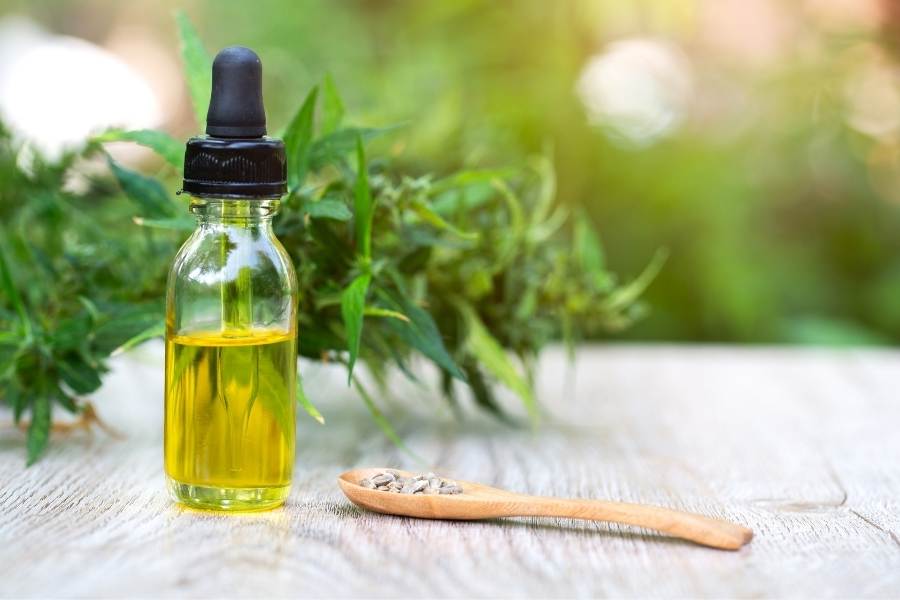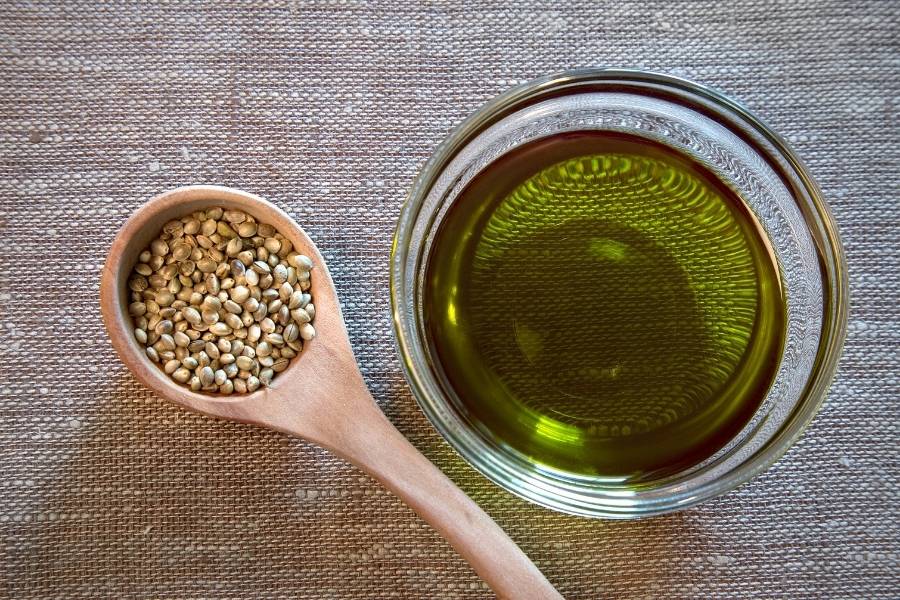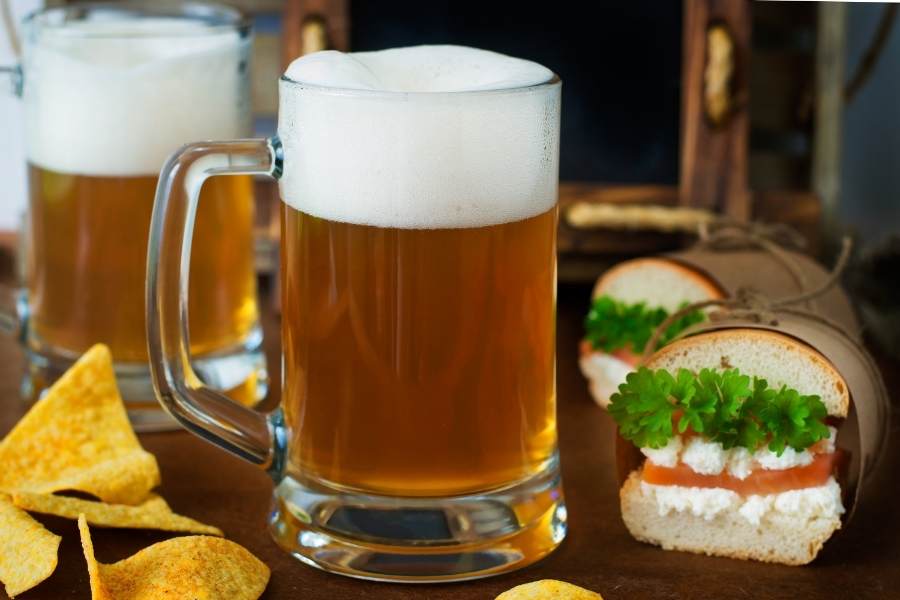In recent years, hemp has become increasingly well known for its impressive versatility. Today, farm-grown hemp is used to manufacture various environmentally friendly products, including textiles, fabrics, and industrial bio-aggregates such as hempcrete.

However, it’s perhaps most well-known for its high yields of non-psychoactive cannabinoids and terpenoids — a direct boon to the multi-billion dollar global CBD and wholesale terpenes industries.
So, how useful is hemp around the house? In this post, we go over three useful DIY hemp products you can easily make for personal use, right from the comfort of home and with everyday household items.
Homemade CBD Hemp Oil
CBD hemp oil is perfect for massage, as well as an infusion into bath oils, balms, and even vaping e-liquids because of its general imperceptibility in terms of flavor and aroma. Studies show that CBD aids significantly in pain relief, reducing inflammation, boosting the immune system, and helping hormonal balance (homeostasis).

Let’s look at how to extract the naturally occurring compounds and phytonutrients from mature flowers and leaves in the hemp plant — essentially creating full-spectrum CBD oil without expensive machinery or hi-tech extraction procedures involving supercritical CO2.
What you’ll need:
- 1oz high-CBD hemp buds, dried (i.e., “cured”)
- a cannabis grinder
- 9oz coconut oil
- a cheesecloth
- a stove and oven
- a mason jar
- a double boiler
- a glass or ceramic bowl
- a silicone spatula
Grind up the hemp buds using the cannabis grinder, spread over a cookie sheet on an oven tray, and set in the oven at 320°F for 90-100 minutes to decarboxylate them. Then mix your decarboxylated buds with the coconut oil in the mason jar. The less oil you use in proportion to the hemp buds, the more potent the CBD hemp oil will be.
Lid the mason jar and set it up in your double boiler. Bring the water to 200°F and maintain for three hours before shutting off the stove. After the double boiler has cooled for 3-4 hours, heat for another 3 hours, shut off the stove, and leave to cool overnight.
The next morning, use the cheesecloth to strain the oil out of the mason jar and into a bowl. Be sure to squeeze out the cheesecloth after pouring to avoid wastage. Your CBD hemp oil is now ready for jarring, bottling, and home use, or for enjoying a massage in your favorite 420 friendly hotel.
Homemade Hemp Seed Oil
The hemp seed oil contains virtually no cannabinoids but is highly beneficial to the skin as a moisturizer, exfoliator, and cleanser. It’s shown to effectively regulate sebum production, reduce skin inflammation associated with acne, and treat atopic dermatitis. Hemp seed oil can also be used as a healthy additive in baking and light cooking — just be wary of its low flashpoint.

Another huge benefit to hemp seed oil is how quick and easy it is to make without unnecessary and harmful commercial additives. Here’s our quick walkthrough:
What you’ll need:
- a hand-operated or manual press and hopper
- a partner (optional but recommended)
- 4 cups shelled hemp seeds
- a bottle lamp with a wick
- lamp fuel, such as paraffin or olive oil
- a bowl for oil collection
- a disposal bag or basket for waste matter
Secure your press to a sturdy island counter or table; it’d be much more comfortable with the help of a partner. Fuel and light the lamp, allowing it to heat the device for 8-10 minutes.
Fill the hopper of your press to no more than half capacity to reduce wastage and jamming, and begin cranking the press. As oil begins to flow from the press and into the collection bowl, be sure to top off the hopper as it empties, but never to more than half capacity. If you have a partner handy, allow him or her to take over for you occasionally.
Once you’ve pressed four cups worth of hemp seeds, there should be a good amount of oil in the collection bowl to last months of use. Thorough cleaning of the manual press after use will ensure its proper operation when making future batches of hemp seed oil, as well as provide you with some highly nutritious organic fertilizer.
Homemade Hemp-Infused CBD Lager Beer
Whether or not you’re a homebrewing hobbyist, making beer is nowhere near as daunting as it sounds. Sure, we could simply tell you to decarboxylate some hand-ground hemp stalk, tie it up in cheesecloth to make a hemp package, and stick that into an open bottle of your favorite beer for a couple of days — but that wouldn’t exactly be DIY beer. Instead, let’s go over how to make a small keg’s worth of real homemade dank lager brew from scratch.

What you’ll need:
- a 10-gallon (37.8L) stainless steel beer brewing pot equipped with a grain basket and hop basket
- a grain, flour, or roller mill
- 7.65 gallons (29L) of fresh water
- 9lbs 10.4oz Pilsen malt of your choice
- 2oz acidulated malt
- 1.85 oz Columbus or Tomahawk hops
- a 10-gallon (37.8L) brewing or fermentation jar
- a single pack of Pilsner lager yeast
- 1 oz hemp seed meal or raw hemp kernel powder
- 1 g CBD powder or 1ml activated CBD syrup
- an 8-gallon or smaller fine mesh homebrewing grain or filter bag (optional)
Set the water in the brew pot to 154°F, milling the Pilsen and acidulated malts as you wait. Once the water is up to temperature, put it in the grain basket and pour in the malts. Lid the brew pot and allow the malts to mash for exactly 60 minutes.
Once an hour has passed, pull your grain basket and boil the remaining wort for another 60 minutes, using your hop basket to add in a fourth of your hops every 15 minutes. Once the second hour has passed, shut off the heat and add in your ounce of hemp powder. Allow the starter wort to cool down to 65°F — you can use a plate chiller to speed up the process if you have one handy.
Once the wort is down to temperature, set up and add your Pilsner lager yeast before transferring the mixture into the fermentation jar. Here’s your chance to get creative: optionally, you can add your preferred proportion of flavoring agent to the mixture before the fermenting begins. Examples of popular beer flavoring agents are 6-8 tablespoons of caramel syrup or freshly-chopped berries in the optional grain or filter bag listed above. You could even combine multiple flavoring agents — just don’t go overboard. Cover and gently shake to incorporate.
Tightly seal the fermentation jar using its supplied cover, and allow the final wort to ferment for three weeks to a month at 55°F. Once the wait is up, open up the fermenter, remove the filter bag (if you used one for flavoring), and add your CBD powder or syrup. Incorporate and reseal the mixture, allowing it to lager at 35°F for four to six more weeks.
Once the final wait is up, your lager beer is ready for kegging or bottling, carbonation, and drinking. Enjoy responsibly.
So there we shared the three DIY hemp products you can prepare at home. Before you really dive into it, make sure it is legalized in your area, so you don’t invite legal trouble.
The 3 useful diy hemp that you have shared with us along with the ingredients required and the recipe on how to make it will help us in making one for ourselves. I would definitely like to try out to make the homemade hemp seed oil that you have shared. Thank you for sharing it with us and letting us know about it.